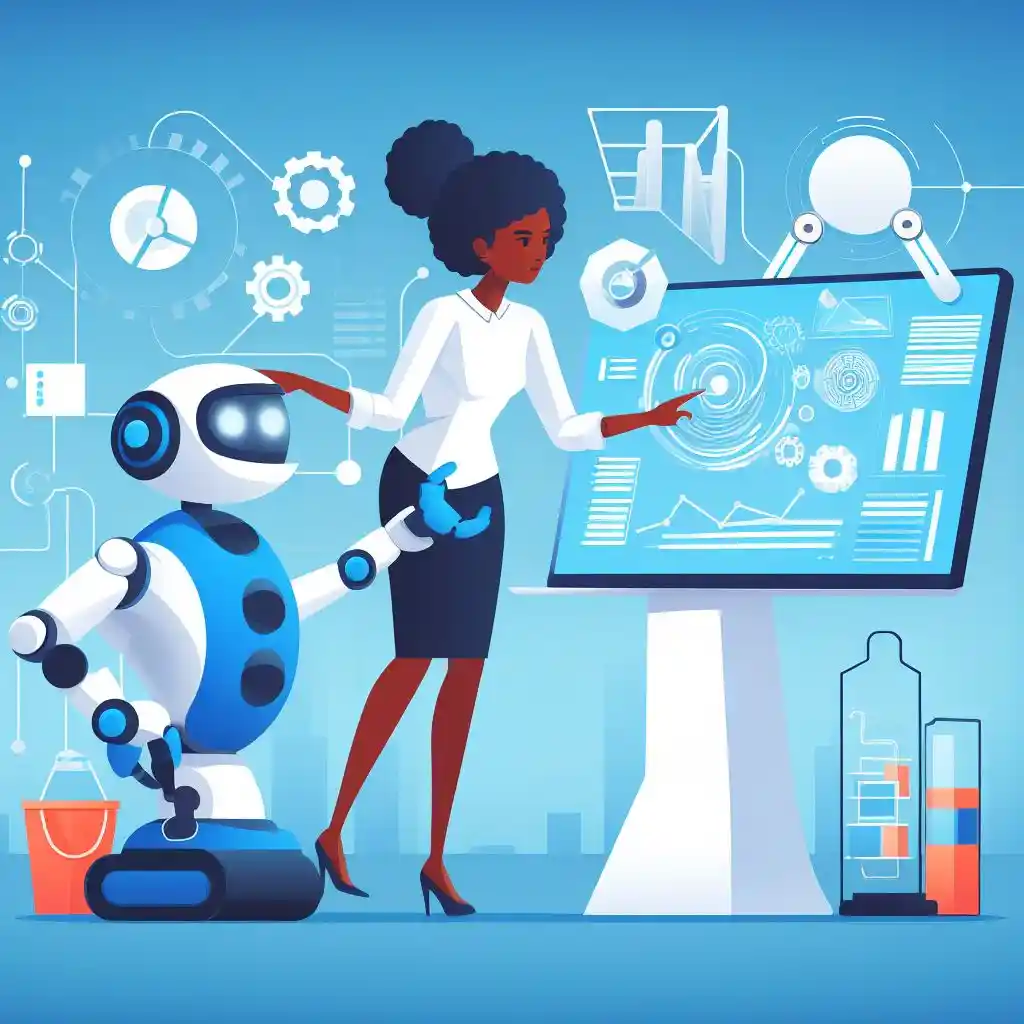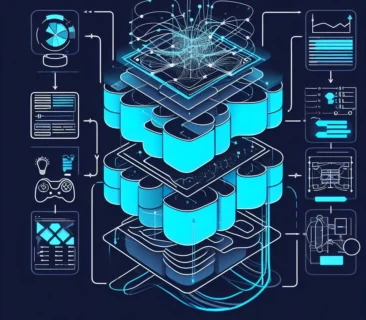
What is Deep Learning
Deep learning is a subfield of machine learning that uses artificial neural networks (ANNs) to learn patterns from data. ANNs consist of multiple layers of interconnected neurons, and each neuron has a weight that determines how much influence it has on other neurons.
Deep learning works by training ANNs on a large dataset. During the training process, the ANN will learn patterns from the data and adjust its weights so that it can produce accurate predictions. Once the ANN is trained, it can be used to process new data and make predictions.
Why Deep Learning is Important

Deep learning is important because it has several advantages over other artificial intelligence (AI) methods, including:
- Ability to recognize complex patterns
- High accuracy
- Flexibility
Deep learning can recognize complex patterns in data that other AI methods cannot. This allows deep learning to be used for a variety of tasks, such as image classification, object detection, image segmentation, natural language processing, speech recognition, and recommendation systems.
Deep learning can produce very accurate predictions, especially if trained on a large dataset. This allows deep learning to be used for a variety of applications that require high accuracy, such as self-driving cars, fraud detection, and medical diagnosis.
Deep learning can be used for a variety of tasks, from simple to complex. This makes deep learning a very versatile technology that can be used for a variety of applications.
Deep learning is also important because it has the potential to revolutionize many industries. For example, deep learning can be used to develop safer self-driving cars, more intelligent virtual assistants, and more effective fraud detection systems. Deep learning can also be used to develop new applications in the fields of healthcare, education, and research.
Applications of Deep Learning

Deep learning can be used for a variety of tasks in a variety of sectors, including:
- Healthcare
- Education
- Retail
- Finance
- Manufacturing
- Transportation
Deep learning is used to develop more accurate medical diagnostic systems, predict the risk of diseases, and develop more effective treatments. For example, deep learning is used to develop systems that can detect cancer more accurately than human doctors.
Deep learning is used to develop adaptive learning systems that can tailor the curriculum to the needs of each student. Deep learning is also used to develop teaching aids, such as automated grading systems and interactive learning tools. For example, deep learning is used to develop systems that can provide personalized feedback to students about their writing.
Deep learning is used to develop more accurate product recommendation systems, detect fraud, and optimize supply chains. For example, deep learning is used to develop systems that can recommend products to customers based on their purchase history.
Deep learning is used to develop fraud detection systems, assess credit risk, and manage investment portfolios. For example, deep learning is used to develop systems that can detect fraudulent credit card transactions more accurately.
Deep learning is used to develop quality control systems, predict maintenance, and optimize production processes. For example, deep learning is used to develop systems that can automatically detect product defects.
Deep learning is used to develop self-driving cars, traffic management systems, and weather forecasting systems. For example, deep learning is used to develop systems that can help self-driving cars to recognize objects on the road and make safe driving decisions.
Deep learning is also used in AI tools for a variety of purposes, including:
- Image classification
- Object detection
- Image segmentation
- Natural language processing
- Speech recognition
- Recommendation systems
Deep learning is used to develop AI tools that can classify images into different categories, such as cars, cats, and trees. These AI tools can be used for a variety of applications, such as image search, object detection, and image segmentation.
Deep learning is used to develop AI tools that can detect objects in images or videos. These AI tools can be used for a variety of applications, such as video surveillance, medical image analysis, and self-driving cars.
Deep learning is used to develop AI tools that can separate objects in an image from its background. These AI tools can be used for a variety of applications, such as image editing, medical image analysis, and virtual reality.
Deep learning is used to develop AI tools that can understand and generate language. These AI tools can be used for a variety of applications, such as machine translation, automatic text generation, and chatbots.
Deep learning is used to develop AI tools that can identify words and sentences in audio. These AI tools can be used for a variety of applications, such as audio transcription, virtual assistants, and automatic speech recognition.
Deep learning is used to develop AI tools that can recommend products, movies, or music to users based on their preferences. These AI tools can be used for a variety of applications, such as e-commerce, streaming media, and social media platforms.
Deep Learning VS Machine Learning

Machine learning (ML) is a field of artificial intelligence (AI) that allows computers to learn without being explicitly programmed. ML works by training a model on a dataset, which allows the model to learn patterns and make accurate predictions on new data.
Deep learning (DL) is a subset of ML that uses artificial neural networks (ANNs) to learn patterns from data. ANNs consist of multiple layers of interconnected neurons, and each neuron has a weight that determines how much influence it has on other neurons.
The main difference between DL and ML is that DL uses ANNs to learn patterns from data, while ML uses a variety of algorithms to train models. ANNs are more complex than other ML algorithms, but ANNs are also more capable of learning complex patterns in data.
The following table summarizes the differences between DL and ML:
| Feature | Deep Learning | Machine Learning |
|---|---|---|
| Algorithm | Uses artificial neural networks | Uses a variety of algorithms |
| Complexity | More complex | Less complex |
| Learning ability | More capable of learning complex patterns | Less capable of learning complex patterns |
| Examples | Self-driving cars, facial recognition, machine translation | Email classification, fraud detection, product recommendation |
How Does Deep Learning Work

Deep learning is a subfield of machine learning that uses artificial neural networks (ANNs) to learn patterns from data. ANNs consist of multiple layers of interconnected neurons, and each neuron has a weight that determines how much influence it has on other neurons.
Deep learning works by training ANNs on a large dataset. During the training process, the ANN will learn patterns from the data and adjust its weights so that it can produce accurate predictions. Once the ANN is trained, it can be used to process new data and make predictions.
Here is a more detailed explanation of how deep learning works:
- Input data: The ANN will first receive input data. Input data can be images, videos, text, or other numerical data.
- Forward propagation: The input data will then be passed through each layer of neurons in the ANN. At each layer, the neurons will process the data using an activation function. The activation function determines how much the neuron will be activated based on the input it receives.
- Backward propagation: After the data has passed through all layers of neurons, the ANN will calculate its prediction error. This prediction error is then used to adjust the neuron weights. This process is called backpropagation.
- Weight update: The neuron weights will be updated using an optimization algorithm. The optimization algorithm will attempt to minimize the ANN’s prediction error.
- Output data: After the neuron weights have been updated, the ANN will generate output data. Output data can be a prediction of a class label, a class probability, or a feature vector.
The ANN training process will be repeated several times until the ANN can produce accurate predictions on new data. Once the ANN is trained, it can be used to process new data and make predictions.
Here are some additional details about how deep learning works:
- The number of layers in an ANN can vary. Simple ANNs may have only a few layers, while more complex ANNs may have dozens or even hundreds of layers.
- The type of activation function used in an ANN can also vary. Different activation functions can be better suited for different tasks.
- The optimization algorithm used to update the neuron weights can also vary. Different optimization algorithms can be more efficient than others, depending on the specific task.
Deep Learning Algorithms

Deep learning uses a variety of algorithms to train artificial neural networks (ANNs). Some of the most commonly used algorithms include:
- Gradient descent
- Stochastic gradient descent (SGD)
- Adam
- Momentum
- Backpropagation
Gradient descent is an optimization algorithm that is used to minimize the loss function. The loss function is a metric that is used to measure how well the ANN performs predictions.
SGD is a variant of gradient descent that updates the ANN’s weights one at a time. SGD is faster than gradient descent, but SGD is also more susceptible to overfitting.
Adam is an adaptive optimization algorithm that combines two other optimization algorithms, namely adaptive gradient algorithm (AdaGrad) and root mean square propagation (RMSprop). Adam is more stable and faster than SGD and gradient descent.
Momentum is an algorithm that is used to accelerate the ANN’s training process. Momentum adds to the speed of the ANN’s weight updates in the direction of the gradient descent of the loss function.
Backpropagation is an algorithm that is used to calculate the ANN’s prediction error and adjust the ANN’s neuron weights. Backpropagation is an essential part of the ANN’s training process.
Limitations of Deep Learning

Deep learning is a powerful technology, but it also has some limitations, including:
- Need for large data sets
- Need for high computational power
- Model complexity
- Vulnerability to adversarial attacks
- High cost
Deep learning requires large data sets to train artificial neural networks (ANNs). If the training data is not large enough, the ANN may experience overfitting, which is a condition in which the ANN can memorize the training data but cannot make accurate predictions on new data.
The ANN training process requires high computational power. This is because ANNs consist of many neurons and each neuron has many weights that need to be updated.
ANNs are very complex models This can make ANNs difficult to interpret and analyze.
Adversarial attacks are attacks against AI systems that are carried out by slightly modifying the input data so that the AI system produces the wrong output. ANNs are very vulnerable to adversarial attacks because ANNs cannot understand the meaning of the input data.
Developing and training deep learning systems requires high costs, especially for complex systems.
In addition to the limitations listed above, deep learning also has some other limitations, such as data bias and lack of privacy.
- Data bias
- Lack of privacy
is bias that occurs in the ANN’s training data. Data bias can occur for various reasons, such as non-representative data collection or the use of biased data. Data bias can cause the ANN to produce biased predictions.
Deep learning systems are often trained on personal data, such as images, videos, and text. This raises concerns about user privacy. In addition, deep learning systems can be used to track and monitor users.
RELATED POSTS
View all



